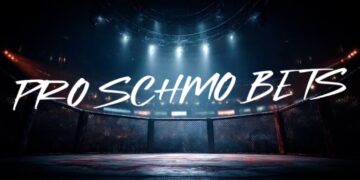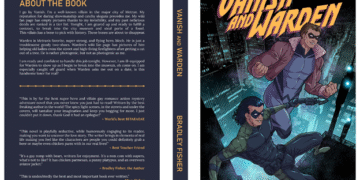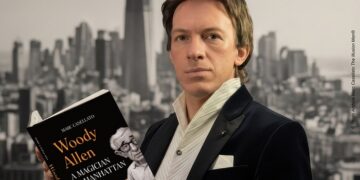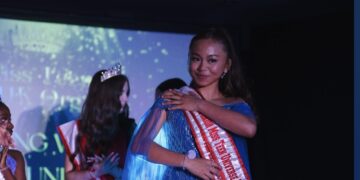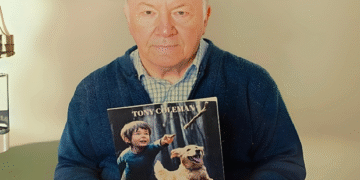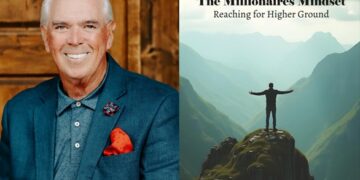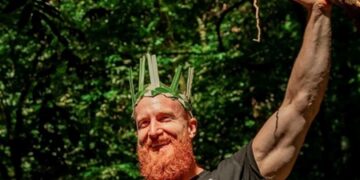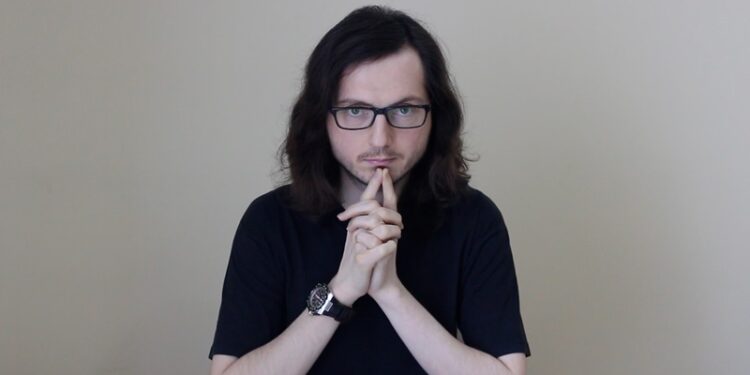Serkan Aktaş is a Turkish filmmaker, screenwriter, and producer, known for blending intellectual rigor with artistic storytelling. With a background in Business Administration and Mathematics, Serkan brings a unique perspective to the world of cinema, particularly in the genres of fantasy and science fiction. His films explore complex themes of identity, culture, and the human experience, while often incorporating abstract mathematical concepts and philosophical ideas.
A passionate explorer of fantasy and science fiction cinema, Aktaş is also deeply interested in abstract mathematics, fractals, quantum mechanics, cosmology, metaphysics, and Sufism. These fields significantly influence his cinematic work, allowing him to craft stories that are intellectually rich and visually captivating.
His works, including The Librarian, Mirrorty, and Resurrection under the Ocean, have earned him critical acclaim and numerous awards, positioning him as one of Turkey’s most recognized filmmakers. His passion for timeless stories, coupled with a deep understanding of both the technical and emotional aspects of filmmaking, sets his work apart in the contemporary cinematic landscape.
We had the privilege of sitting down with award-winning filmmaker Serkan Aktaş to dive into his journey, creative philosophy, and his approach to crafting timeless stories in cinema.
What first drew you to fantasy and science fiction, and how do these genres influence your filmmaking?
What first drew me to fantasy and science fiction was my deep connection with movies like Robocop and superhero films such as Superman, Batman, and Spiderman. I still vividly remember one night when I was 8 years old, watching Robocop on TV. It had such a profound effect on me. The fusion of technology, humanity, and action in that film opened my eyes to a world where anything seemed possible. From then on, I was hooked on superhero movies, watching them over and over on TV, on CD, and DVD.
Growing up, I was always drawn to science subjects during my time in primary school, junior high, and high school. That scientific curiosity—combined with my love for movies that pushed the boundaries of imagination—naturally led me to the fantasy and sci-fi genres. I found that these genres allowed me to explore larger-than-life ideas, the uncharted territories of human potential, and the questions that challenge our understanding of the world. They offered me a way to express the same kind of wonder and curiosity I had for the unknown, while also grounding my work in real-world issues.
How did your background in Business Administration and Mathematics shape your approach to filmmaking?
My background in Business Administration and Mathematics has deeply shaped my approach to filmmaking, particularly in how I structure stories and solve creative problems. Though it may seem unconventional, my transition from these fields to filmmaking was a natural progression for me. As a mathematician, I’ve always been drawn to patterns, structures, and the abstract. Mathematics is about finding solutions and exploring complex systems, and these concepts flow seamlessly into my filmmaking.
For example, in my films, especially within the sci-fi and fantasy genres, I often incorporate mathematical ideas, like fractals or abstract mathematical structures, which bring depth and layers to the narratives. These genres provide a perfect canvas for such concepts because they allow for boundless creativity while maintaining an underlying logical structure. In a way, my love for abstract thinking and problem-solving directly influences how I approach storytelling—whether it’s through complex, layered plotlines or incorporating futuristic technologies that challenge our understanding of the world.
Business Administration also played a crucial role in my filmmaking journey as a producer. The skills I developed in project management, time planning, and resource allocation have been indispensable, especially in independent filmmaking. Managing budgets, scheduling shoots, and organizing teams are all elements that benefit from my background in business. In essence, filmmaking requires both creativity and discipline, and my academic experiences have given me the ability to balance both—planning meticulously while allowing room for artistic freedom.
For me, filmmaking is not just about creating art; it’s about using stories to explore real-world problems and offer possible solutions. This is where my intellectual perspective and my filmmaker identity merge. I strive to create films that not only entertain but also inspire thought and provide answers to unresolved issues. Whether it’s through tackling societal questions or exploring the boundaries of human potential, my films aim to bring together creativity, intellectual rigor, and a drive for meaningful impact.
What was the most valuable lesson you learned during your studies at the Istanbul Cinema Academy and Beykent University?
The most valuable lesson I learned during my studies at both Istanbul Cinema Academy and Beykent University was the realization that cinema is not just an art form—it is both a science and a discipline. At Beykent University, where I completed my Master’s and Doctorate in Film and Television, I gained a deeper understanding of film theory, cinematography techniques, and narrative structures. These academic foundations shaped my approach to filmmaking by encouraging me to think critically about my work and to view filmmaking from a more analytical perspective.
I came to understand that cinema is not just about creating stories; it’s about challenging ideas, questioning perceptions, and offering new ways to look at the world. This was a crucial lesson for me—learning how to integrate both creativity and intellectual rigor into my films. I strive to create works that not only entertain but also provoke thought and engage the audience on a deeper level. My education at Beykent helped me develop a more nuanced approach to storytelling, ensuring that my films offer both an emotional experience and intellectual depth.
In addition, my time at Istanbul Cinema Academy was transformative. Although I already had a background in mathematics and business, I knew I needed to complete my film education to fully bring my vision to life. The one-year program at Istanbul Cinema Academy helped me fill the gaps in my technical knowledge and provided me with a comprehensive understanding of both the creative and technical sides of filmmaking. The practical skills I learned there, combined with my passion for cinema, were invaluable in transforming my creative ideas into reality. The academy taught me that filmmaking is not just a profession, but a way of life—a path that demands constant learning, experimentation, and growth.
Both of these academic experiences gave me the tools to approach filmmaking with a more disciplined, intellectual mindset, and I continue to apply those lessons as I create stories that push boundaries and offer new perspectives.
You mentioned that a great film stands the test of time—what are some movies that inspire you in that regard?
When I say that “the best movie is one that can be watched over and over again,” I’m referring to films that not only entertain but also offer layers of meaning that reveal themselves with each viewing. Some movies that inspire me in this regard are Being John Malkovich (1999), Groundhog Day (1993), Dark City (1998), and Pitch Black (2000).
These films transcend mere entertainment—they challenge our perceptions of reality, existence, and identity in ways that feel fresh no matter how many times I watch them. Being John Malkovich and Groundhog Day take us to surreal places, twisting reality in ways that spark philosophical questions. They’re the kind of films that stay with you long after the credits roll, inviting you to revisit them again and again, each time uncovering something new.
On the other hand, films like Dark City and Pitch Black represent the best of science fiction by pushing the boundaries of human survival and the unknown. They challenge our understanding of nature and reality, offering worlds that are as complex and infinite as the fractals I study. These films, like the mathematical concepts I love, reveal deeper layers of complexity each time you experience them. For me, this ability to challenge, inspire, and reward repeated viewings is a hallmark of a great film.
These movies continue to inspire me because they blend profound ideas with boundless imagination. As a filmmaker, I strive to create the same kind of films—stories that stay with audiences, that they want to revisit and explore on a deeper level, time and time again.
Can you share the creative process behind one of your most acclaimed films, such as The Librarian or Mirrorty?
The creative process behind The Librarian and Mirrorty was deeply influenced by my academic studies and personal observations of the world around me. Both films emerged from a desire to explore complex human emotions and societal issues through the lens of fantasy and psychological thriller.
For The Librarian, the idea began to take shape during my doctoral studies. One of my key inspirations came from Martin Scorsese’s Taxi Driver, particularly the character of Travis, portrayed by Robert De Niro. The isolation and struggle to connect with society that Travis experiences sparked my exploration of loneliness in modern urban life. As I observed the sociopolitical shifts in Turkey, such as the influx of Syrian refugees and the blending of cultures, I found myself drawn to the theme of identity in a world that’s increasingly complex and divided. The protagonist of The Librarian, an intellectual working in a library, is someone who feels disconnected and alienated, struggling to preserve his native culture and language amid societal changes. I set the story in the Fatih district of Istanbul, a place where immigrants, particularly Syrians, create a vibrant cultural mosaic. The library, for me, became a symbol of the preservation of knowledge, language, and identity in a rapidly changing world. The film reflects on the importance of language and culture and how individuals can feel isolated when their intellectual and cultural values no longer seem to belong.
Mirrorty, on the other hand, came from my fascination with the concept of identification in cinema, specifically the idea of the mirror stage, which I explored in my thesis. I was particularly influenced by Lacan and Metz’s theories, as well as films like Vertigo and Tarkovsky’s Zerkalo-Mirror. During my research, I was drawn to the idea that mirrors could serve as a metaphor for self-reflection and identity, but also for entrapment. One day, while discussing the two-dimensional surface of mirrors and their three-dimensional depth with a friend who specializes in mathematics, the creative idea for the story emerged: “Mysteriously, mirrors hold some people captive.” I wanted to create a psychological thriller that explored the boundaries between reality and illusion, using the mirror as a tool to delve into the protagonist’s psychological journey. The film follows a single protagonist, structured within the framework of a three-act narrative and the hero’s journey, incorporating Carl Jung’s archetypes to shape the character’s development.
Both films allowed me to explore complex intellectual ideas—such as identity, culture, and the nature of reality—through storytelling. My background in mathematics and film theory provided me with a unique framework to blend abstract concepts with deeply emotional narratives. In the end, the creative process for both The Librarian and Mirrorty was a blend of observation, theory, and personal experience, which I then translated into stories that not only entertain but also provoke thought and introspection.
What themes or messages do you hope to convey through your films? What has been the most rewarding moment of your filmmaking career so far?
Through my films, I hope to convey deep and often existential themes that invite audiences to reflect on the complexities of human nature, identity, and societal challenges. In “The Librarian”, for instance, I explored the struggle for personal identity and the feelings of alienation in a society marked by rapid change. The protagonist, Mazhar, faces an emotional crisis stemming from his disconnection from the surrounding world and the loss of his job. His inner journey, accompanied by a backdrop of changing societal norms, aims to spark a reflection on how people confront their own isolation and search for meaning in a fragmented world. The sea, which symbolizes both the vastness of human emotions and the feeling of being lost, is central to this narrative. In “Resurrection under the Ocean”, the ocean represents not only the literal but also the psychological depths of human experience—illustrating themes of death and rebirth, where an individual can rise from emotional despair to experience a form of personal and spiritual resurrection. Through these narratives, I want to communicate that even in our darkest times, there is a potential for transformation and renewal.
In “Mirrorty”, the theme of alienation in the digital age takes center stage. The protagonist’s disappearance in a world where people are increasingly detached from reality is a metaphor for the growing isolation we experience due to technology. Through the use of mirrors—specifically the black mirrors of smartphones and screens—I aim to explore the psychological toll of our growing detachment from meaningful human connection. These themes reflect my belief in the importance of questioning our relationship with technology and the impact it has on our humanity.
In “The Death Ox”, I wanted to focus on the inescapable cycle of life and death. The film reflects on our relationship with nature, our power to shape it, and ultimately the consequences of this power. The film’s stark imagery, particularly the butchering of an ox, serves as a meditation on the inevitability of death and the ongoing human influence on the natural world. It’s a reflection on how we confront mortality and the profound interconnectedness between humans and nature.
In “Lucky Coin!”, I wanted to challenge the notion of luck and the myth of easy success. The protagonist, a university student who attributes his failure to bad luck, embarks on a journey to change his fortune. This story conveys a powerful message about personal responsibility, perseverance, and the importance of hard work. It’s about understanding that success is earned through effort, determination, and growth, rather than relying on superstition or shortcuts.
The most rewarding moment of my filmmaking career thus far has been witnessing how audiences connect with the underlying messages in my films. Whether it’s the journey of identity and rebirth in The Librarian and Resurrection under the Ocean, the exploration of alienation in Mirrorty, or the reflections on life and death in The Death Ox and Lucky Coin!, the feedback from viewers who see their own experiences reflected in the themes of my films is incredibly fulfilling. It reminds me of the power of storytelling to evoke empathy, spark self-reflection, and, ultimately, make a lasting emotional impact. This connection with the audience—the realization that my work has resonated and inspired—has been the most rewarding aspect of my career so far.
How do you balance artistic expression with audience expectations? As Turkey’s most awarded filmmaker, what do you think makes your work stand out?
To balance artistic expression with audience expectations, I believe it’s essential to stay true to the vision of the story while also considering the emotional connection with the audience. As an artist, my goal is to craft films that not only challenge the viewer but also offer an experience that resonates on a deeper, emotional level.
The key is to weave together layers of meaning and complex themes while maintaining accessibility. I like to create narratives that can be interpreted in multiple ways, which allows for a deeper connection with those who are willing to dive in and explore. Ultimately, I want people to experience the same joy and wonder that cinema brings me. I aim for my films to be those that can be watched over and over again—films that offer something new with each viewing, whether it’s an emotional layer, a thematic nuance, or a symbolic connection.
What I believe makes my work stand out is this approach to storytelling. I don’t just want to entertain, but to provoke thought and evoke emotion in a lasting way. I draw inspiration from both my intellectual background and my passion for visual storytelling, combining the analytical and creative aspects to create films that offer both depth and broad appeal. It’s about creating films that resonate with audiences across cultures and backgrounds, films that stay with them long after the credits roll.
Being recognized as one of Turkey’s most awarded filmmakers is both humbling and motivating. But what matters most is the connection I make with the audience through my work. When a film can stand the test of time, be revisited, and continue to speak to people in new ways—that’s when I feel I’ve truly achieved my goal as a filmmaker.
What advice would you give to aspiring filmmakers who want to create timeless stories?
For aspiring filmmakers who want to create timeless stories, my advice is simple yet profound: “Read every day, watch every day, write every day, and then make your movie.” The more input you have—the more you absorb from different sources, experiences, and perspectives—the more you will be able to express creatively. It’s essential to cultivate a routine of constant learning, whether that’s through literature, cinema, or life itself.
Also, always remember that the best movie is one that can be watched over and over again. A timeless story is one that resonates with audiences long after they’ve seen it. So, when crafting your narratives, focus on universal themes and emotional depth—things that speak to the human experience in a way that feels both familiar and fresh.
Ultimately, filmmaking is about passion, dedication, and a deep love for the art. Don’t just make movies to entertain—make movies that inspire, challenge, and move people, and your work will stand the test of time.
IMDB | LinkedIn | TMDB | Letterboxd | FilmFreeway | X | Vimeo | YouTube
YOUTUBE LINKS
Link 1: https://www.youtube.com/watch?v=EpKt14Pcpdg
Link 2: https://youtu.be/WxutME08t6M
Link 3: https://www.youtube.com/watch?v=gNuQ2i88-EU
Link 4: https://www.youtube.com/watch?v=i1fNwIvskXA





